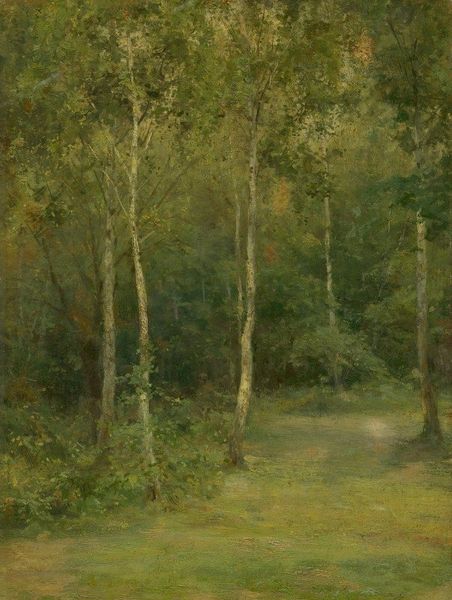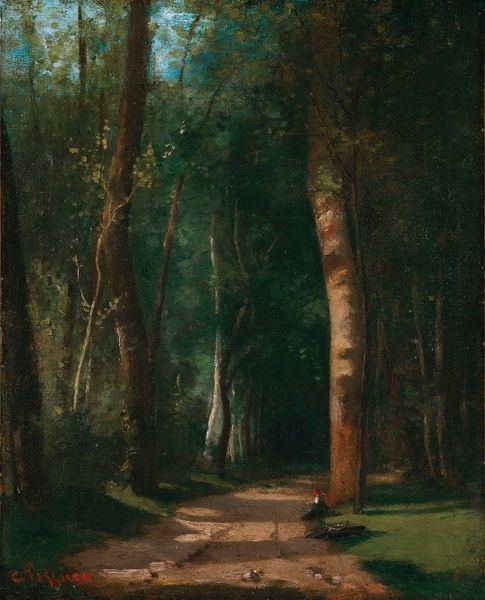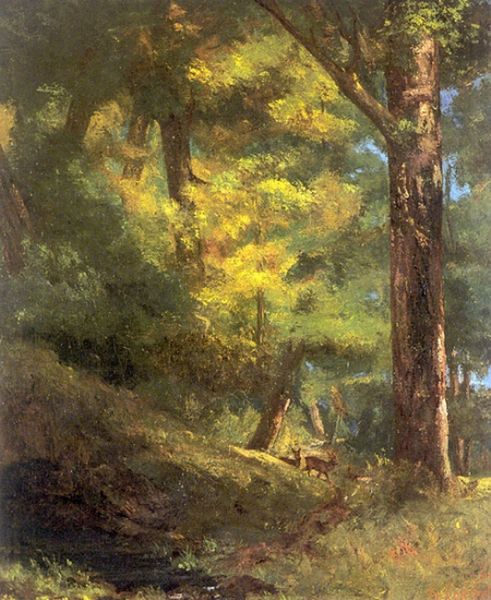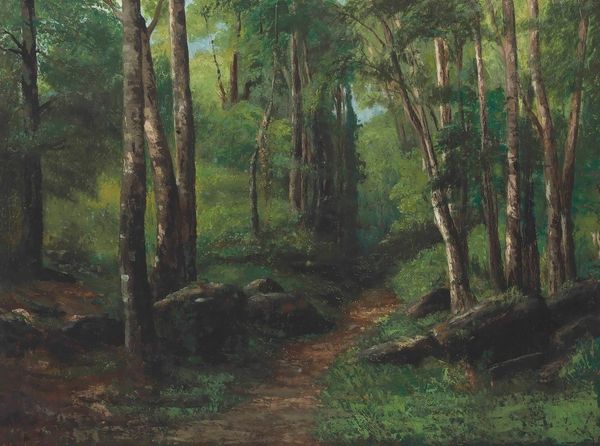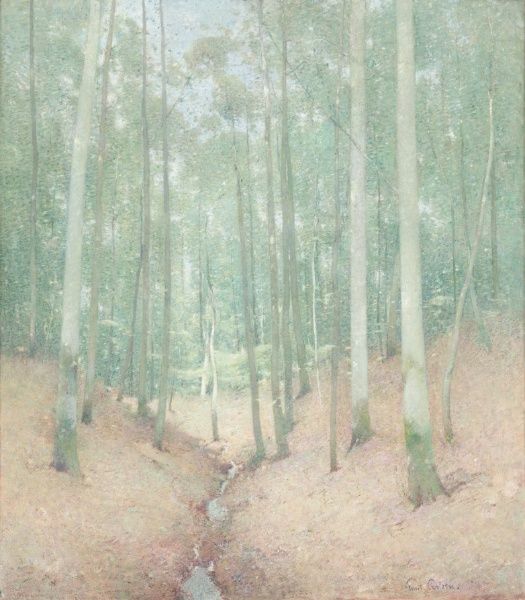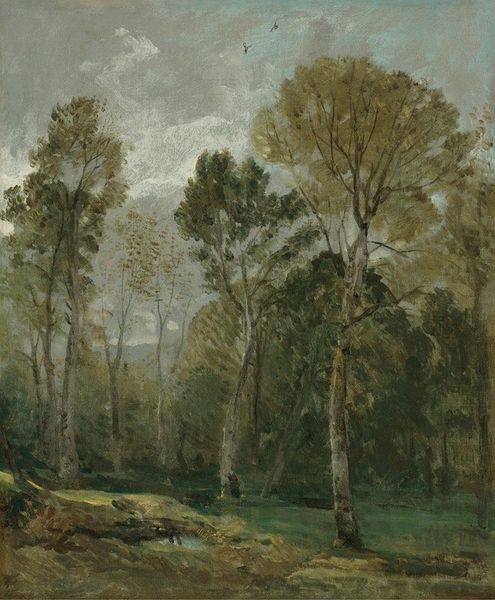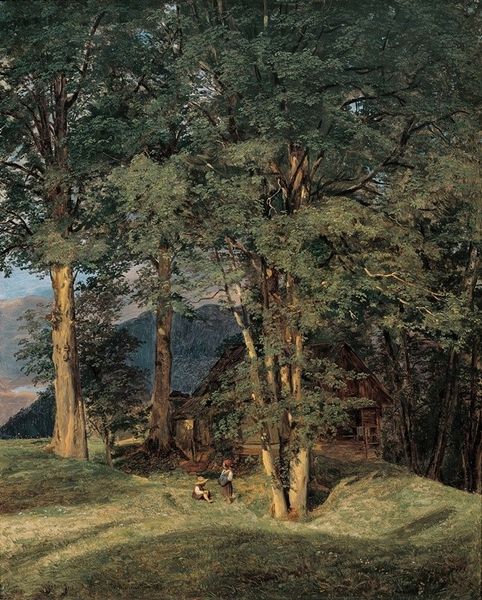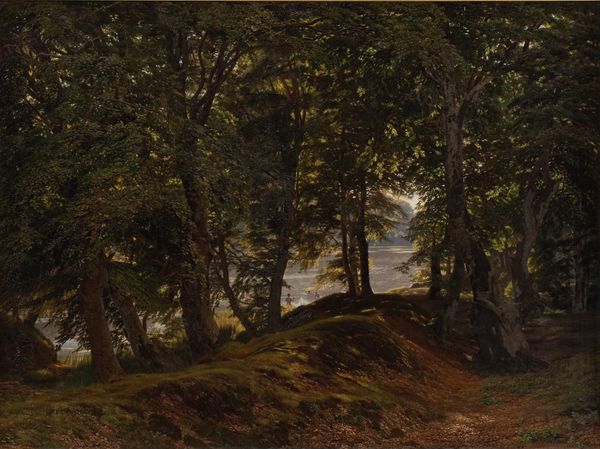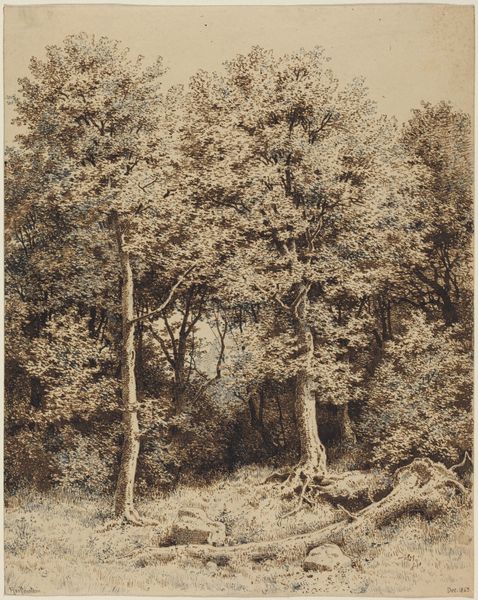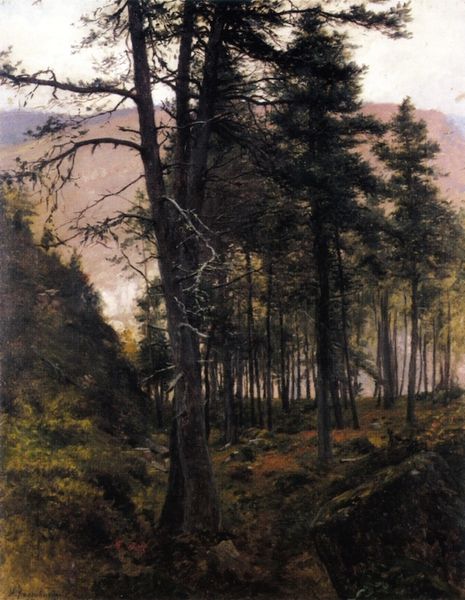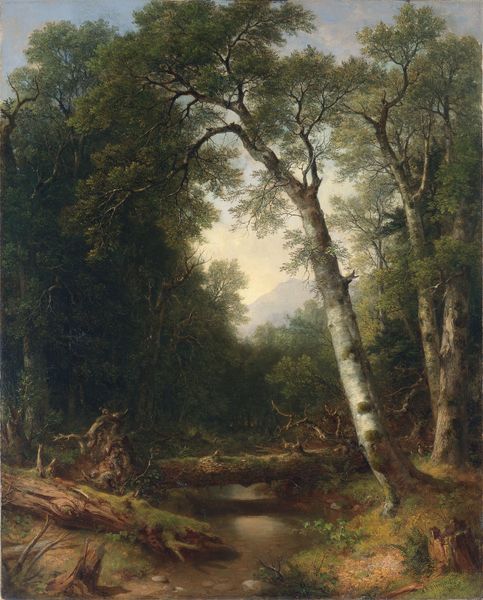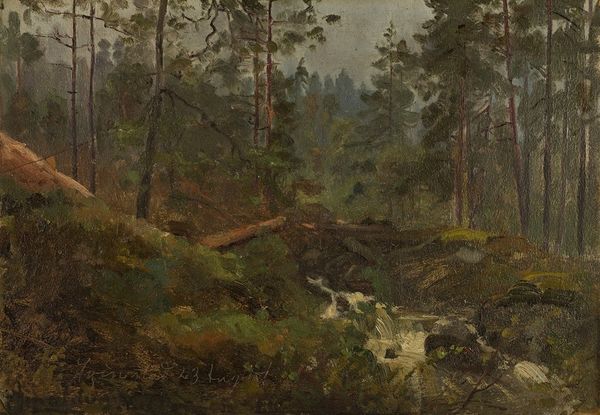
Copyright: Public Domain: Artvee
Editor: We're looking at Ľudovít Čordák's "Forest," created in 1894 using oil paints, seemingly en plein air. It's quite a dense, detailed scene, but the brushstrokes suggest a fleeting moment captured. What strikes you most about this piece? Curator: What grabs me immediately is the very palpable sense of the artist's labor. Consider the material reality here: the oil paint itself, the weave of the canvas, the hours spent likely battling the elements while attempting to capture the transient effects of light filtering through the trees. It challenges this idea of pure, unadulterated nature, doesn’t it? Editor: It does! So, you're saying we should think less about the idealized image of a forest and more about the process of making this image? Curator: Precisely. What kind of brushes might he have used? Were the paints pre-mixed or created from raw pigment? How did the availability of materials at the time shape his artistic choices? Did the shift towards readily available, commercially produced paints democratize landscape painting? The forest becomes a site of production, and Čordák, a worker translating his experience with readily available resources. Editor: I never considered it that way. Thinking about the mass production of oil paints versus making them yourself… that definitely changes how you see the artist's involvement. It feels like the context really reshapes our appreciation of his work. Curator: Exactly! We often separate art from the conditions of its making. Understanding the relationship between materials, labour, and cultural context offers us a much richer, deeper perspective. Editor: So true. I am seeing this piece with new eyes, considering not just the forest, but also the artist’s labor in the 1890's, how that making shaped the artwork itself.
Comments
No comments
Be the first to comment and join the conversation on the ultimate creative platform.
